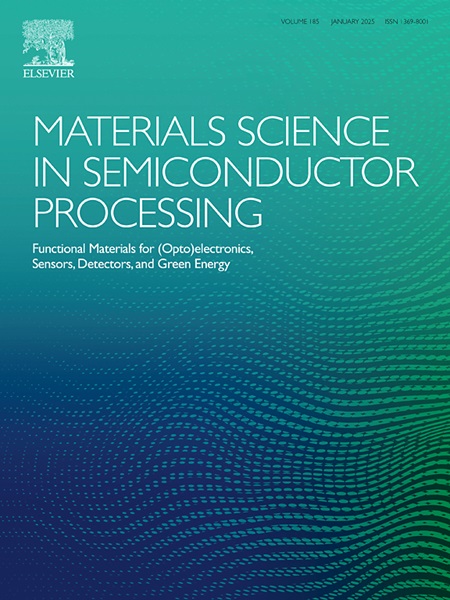Crystallization regulation strategy by using 4,4'-cyclohexylidenebis(N, N-bis(p-tolyl)aniline) for high-performance air-processed perovskite photodetectors and solar cells
IF 4.2
3区 工程技术
Q2 ENGINEERING, ELECTRICAL & ELECTRONIC
引用次数: 0
Abstract
Perovskites offer notable advantages, including simplified processing, reduced production costs, and scalability for large-area preparation. However, the crystallization process is very sensitive to humidity. Although some progress has been made in air-processed perovskite solar cells (PSCs), there remains a relative scarcity of research on air-processed perovskite photodetectors (PPDs). In this work, we propose a strategy employing electron-donating molecules to enhance the performance of both air-processed PPDs and PSCs. To promote the crystallization of perovskites in air and mitigate the trap states, 4,4'-cyclohexylidenebis(N, N-bis(p-tolyl)aniline) (TAPC), an electron-donating organic small molecule is added into the perovskite precursor to interact with Pb ions. The addition of TAPC not only reduces non-radiative recombination within the perovskite but also optimizes energy level alignment at the perovskite/C60 interface. As a result, the TAPC-doped PSCs achieve a power conversion efficiency of 21.20 %. More importantly, for the PPDs, the doping of TAPC elevates the maximum external quantum efficiency to 95 %, while concurrently reducing the dark current density to 4.6 × 10−10 A cm−2. With the suppressed dark current, the linear dynamic range of the PPD spans over 9 orders of magnitudes. Moreover, the response time and the operation stability are also significantly improved. Our crystallization regulation strategy using electron-donating molecules demonstrates its efficacy in enhancing the performance of both air-processed PPDs and PSCs, offering valuable insights for further advancements of perovskite devices fabricated in ambient conditions.
求助全文
约1分钟内获得全文
求助全文
来源期刊

Materials Science in Semiconductor Processing
工程技术-材料科学:综合
CiteScore
8.00
自引率
4.90%
发文量
780
审稿时长
42 days
期刊介绍:
Materials Science in Semiconductor Processing provides a unique forum for the discussion of novel processing, applications and theoretical studies of functional materials and devices for (opto)electronics, sensors, detectors, biotechnology and green energy.
Each issue will aim to provide a snapshot of current insights, new achievements, breakthroughs and future trends in such diverse fields as microelectronics, energy conversion and storage, communications, biotechnology, (photo)catalysis, nano- and thin-film technology, hybrid and composite materials, chemical processing, vapor-phase deposition, device fabrication, and modelling, which are the backbone of advanced semiconductor processing and applications.
Coverage will include: advanced lithography for submicron devices; etching and related topics; ion implantation; damage evolution and related issues; plasma and thermal CVD; rapid thermal processing; advanced metallization and interconnect schemes; thin dielectric layers, oxidation; sol-gel processing; chemical bath and (electro)chemical deposition; compound semiconductor processing; new non-oxide materials and their applications; (macro)molecular and hybrid materials; molecular dynamics, ab-initio methods, Monte Carlo, etc.; new materials and processes for discrete and integrated circuits; magnetic materials and spintronics; heterostructures and quantum devices; engineering of the electrical and optical properties of semiconductors; crystal growth mechanisms; reliability, defect density, intrinsic impurities and defects.
 求助内容:
求助内容: 应助结果提醒方式:
应助结果提醒方式:


